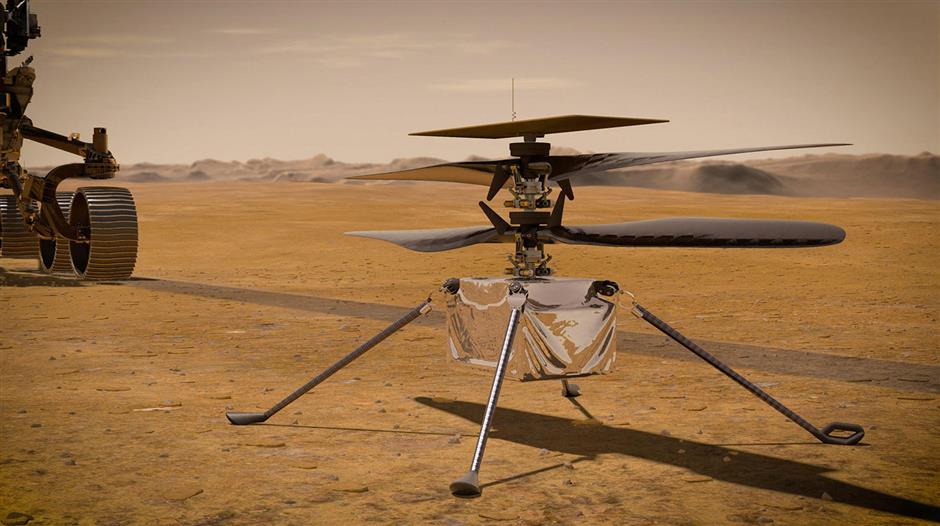NASA eyes April launch for its helicopter on Mars

This NASA photo obtained on Tuesday shows an illustration of NASA’s Ingenuity Mars helicopter standing on the Red Planet’s surface.
NASA is targeting early April for the Ingenuity Mars Helicopter to make the first attempt at powered, controlled flight on another planet, the space agency said on Tuesday.
Right now, the ultra-light aircraft remains fixed to the belly of the Perseverance rover, which touched down on the Red Planet on February 18.
On Sunday, Perseverance dropped the debris shield that had protected Ingenuity during landing, and is making its way to the “airfield” where Ingenuity will attempt its flights.
Once there, it will have 30 Martian sols — equal to 31 Earth days — to carry out its mission.
“The best guess we have right now is April 8,” for the first flight, said Bob Balaram, Mars Helicopter chief engineer at the Jet Propulsion Laboratory, though he added it could be sooner or later by a few days.
Balaram revealed for the first time that Ingenuity is carrying a small piece of cloth that covered one of the wings of the Wright brothers’ first aircraft that achieved the first powered flight on Earth at Kitty Hawk in 1903, to pay tribute to the milestone.
Ingenuity will be attempting to fly in an atmosphere that is 1 percent the density of Earth’s, which makes achieving lift harder — but will be assisted by a gravity that is one-third of our planet’s.
The first flight will involve climbing at a rate of about 1 meter per second to a height of 3 meters, hovering there for 30 seconds, then back to the surface.
The 1.8-kilogram rotorcraft cost NASA around US$85 million to develop, and is considered a proof of concept project that could revolutionize space exploration.
Future aircraft could cover ground much more quickly than rovers, and explore more rugged terrain.
The next one planned is Dragonfly, a rotorcraft-lander that will launch in 2026 and arrive at Saturn’s icy moon Titan in 2034.















